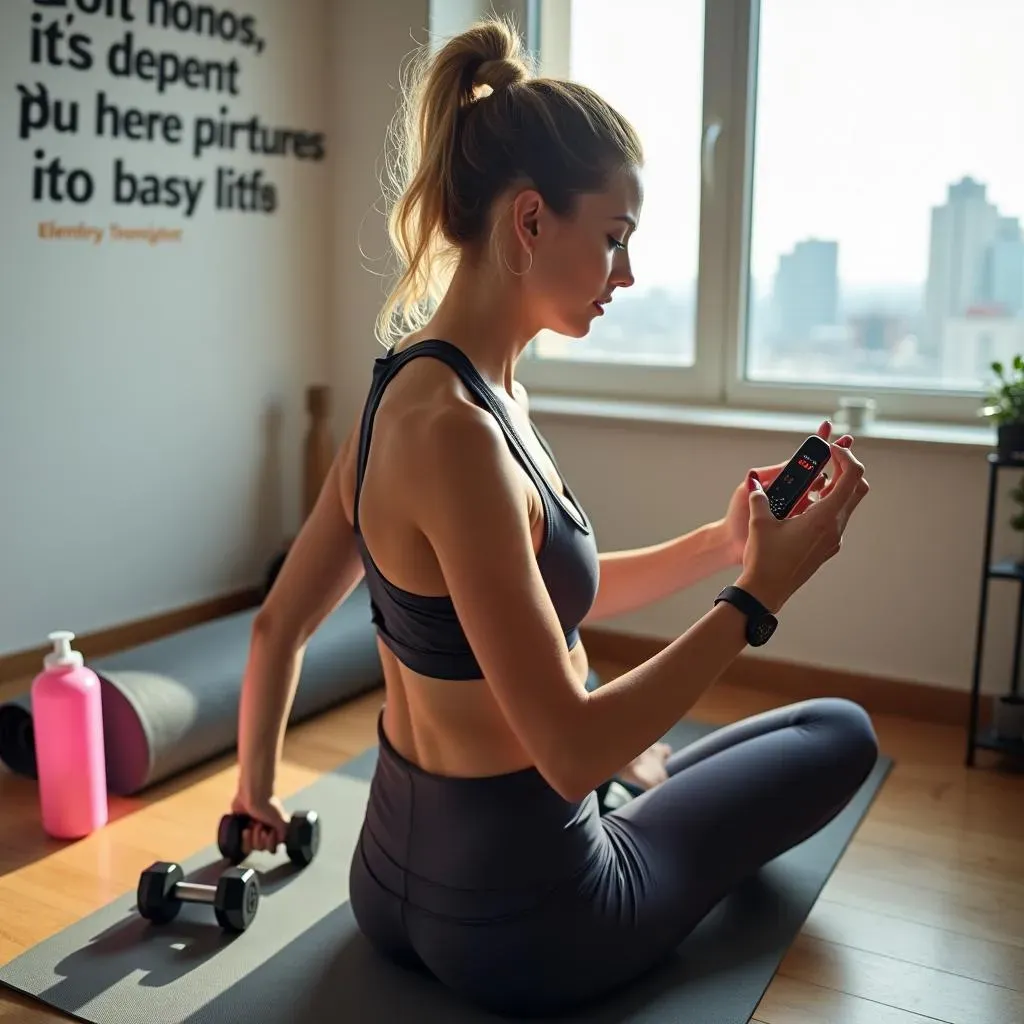Table of Contents
Let's face it: hitting the gym isn't always feasible. Life gets in the way – work, family, that ever-growing pile of laundry. But just because you can't always make it to the gym doesn't mean your fitness goals have to suffer. This article is your guide to crafting a killer cardio routine right in the comfort of your own home. We'll explore the best cardio workouts at home for athletes, focusing on exercises that deliver results without needing expensive equipment or a vast amount of space. Forget boring routines; we're talking dynamic, effective workouts that will push your limits and help you reach peak performance. Whether you're a seasoned athlete looking to supplement your training or a dedicated fitness enthusiast aiming for a more convenient workout, this guide provides the tools and knowledge you need to succeed. We'll cover everything from selecting the right exercises to maximizing your results with proper technique and smart training strategies. Get ready to transform your living room into your personal fitness sanctuary, optimizing your training with efficient and effective cardio workouts at home for athletes. Let's get started!
Best AtHome Cardio Workouts for Athletes

Best AtHome Cardio Workouts for Athletes
High-Intensity Interval Training (HIIT) at Home
HIIT is your secret weapon for maximizing calorie burn and improving cardiovascular fitness in minimal time. Think short bursts of intense exercise followed by brief recovery periods. It's incredibly versatile – you can adapt it to your fitness level and available space. A simple HIIT routine could involve 30 seconds of jumping jacks, followed by 30 seconds of rest, repeated for 10-15 rounds. You can easily swap in other exercises like burpees, mountain climbers, or high knees to keep things interesting and challenge different muscle groups. The key is to push yourself during the work intervals and allow for adequate recovery.
Remember, consistency is key! Aim for at least two HIIT sessions per week. As you get fitter, you can increase the intensity, duration of work intervals, or decrease your rest periods. Don't be afraid to experiment with different exercise combinations to find what works best for you. Listen to your body and take rest days when needed to avoid overtraining. You might even find that you enjoy HIIT workouts so much that they become a regular part of your fitness routine!
Exercise | Duration (seconds) | Reps |
|---|---|---|
Jumping Jacks | 30 | 10-15 rounds |
Burpees | 30 | 10-15 rounds |
Mountain Climbers | 30 | 10-15 rounds |
Bodyweight Cardio Blast
Forget fancy equipment; your own body weight is all you need for a fantastic cardio workout. This approach is perfect for beginners or those who prefer a simpler, more accessible routine. A sample workout could include rounds of squats, lunges, push-ups, and planks, interspersed with active recovery periods like walking in place or light jogging. You can adjust the number of reps and sets to match your fitness level. The beauty of bodyweight training is its adaptability; you can easily modify exercises to make them easier or more challenging.
For instance, if standard push-ups are too difficult, try them against a wall or on your knees. Similarly, you can increase the intensity of lunges by adding a jump or by holding weights. Remember to focus on proper form to prevent injuries. Start with a shorter workout and gradually increase the duration and intensity as you get stronger. The gradual progression will keep you motivated and help you avoid burnout. Remember, consistency is key! Aim for at least three sessions a week, and you'll see amazing results.
- Squats (3 sets of 10-15 reps)
- Lunges (3 sets of 10-15 reps per leg)
- Push-ups (3 sets of as many reps as possible)
- Plank (hold for 30-60 seconds, 3 sets)
Maximize Your Cardio: Tips and Techniques for Home Workouts

Maximize Your Cardio: Tips and Techniques for Home Workouts
Tracking Your Progress: Seeing is Believing
Let's be honest, seeing results fuels motivation. Don't just guess at your progress; track it! Use a fitness tracker, a simple notebook, or even a fitness app to monitor your heart rate, workout duration, and how you feel after each session. This isn't about obsession; it's about empowering yourself with data. Notice patterns? Are you consistently hitting your target heart rate zones? Are you able to increase the intensity or duration of your workouts over time? Tracking helps you see exactly where you're making strides, and it's a powerful motivator to keep going.
Consider setting realistic, achievable goals. Don't aim for the moon on day one. Start with small, manageable goals, like completing a certain number of workouts per week or increasing your workout duration by a few minutes each week. As you achieve these smaller goals, you’ll build confidence and momentum, motivating you to set even bigger goals. Remember, consistency is more important than intensity, especially when starting. Small, regular improvements will lead to significant results over time.
Metric | Tracking Method | Goal Example |
|---|---|---|
Heart Rate | Fitness Tracker, App | Maintain target heart rate for 20 minutes |
Workout Duration | Notebook, App | Increase workout duration by 2 minutes each week |
Reps/Sets | Notebook, App | Increase reps or sets by one each week |
Fueling Your Fitness: Nutrition and Hydration
Your body is a machine, and like any machine, it needs the right fuel to perform at its best. Proper nutrition and hydration are essential components of any successful fitness journey. Before your workout, consume a light snack or meal that provides sustained energy. This might be a piece of fruit, a small bowl of oatmeal, or a protein bar, depending on your preference and the intensity of your workout. During your workout, stay hydrated by drinking water regularly. After your workout, replenish your energy stores and aid muscle recovery with a protein-rich meal or snack.
Remember, consistency is key here too! Avoid crash diets or extreme changes to your diet. Instead, focus on incorporating healthy, whole foods into your diet and limiting processed foods, sugary drinks, and excessive amounts of unhealthy fats. A balanced diet will provide your body with the nutrients it needs to support your fitness goals, while staying hydrated will help you maintain energy levels and prevent muscle cramps during your workouts. Hydration is often overlooked, yet it's crucial for optimal performance. Don't wait until you're thirsty to drink; sip water throughout the day.
- Pre-workout: Fruit, oatmeal, protein bar
- During workout: Water
- Post-workout: Protein shake, lean protein with complex carbs
Listen to Your Body: Rest and Recovery
Pushing your limits is great, but it's equally important to listen to your body. Overtraining can lead to injuries and burnout, hindering your progress. Incorporate rest days into your workout schedule. These days aren't wasted; they allow your muscles to repair and rebuild, making you stronger and preventing injuries. How much rest you need will depend on your training intensity and individual needs. Some athletes benefit from one rest day per week, while others may need two or more.
Remember, rest isn't just about doing nothing. It can also include activities that promote recovery, such as stretching, foam rolling, or light walks. Prioritize sleep as well – aim for 7-9 hours of quality sleep per night. Adequate sleep allows your body to repair itself and consolidate memories, improving your physical and cognitive performance. Don't be afraid to adjust your workout plan if you feel pain or excessive fatigue. It's better to take a break than to risk injury. Listening to your body is a sign of respect for your physical well-being and will ultimately lead to faster and more sustainable gains.
"The body achieves what the mind believes." - Napoleon Hill
Advanced AtHome Cardio for Athletes: Boosting Performance

Advanced AtHome Cardio for Athletes: Boosting Performance
Plyometrics for Explosive Power
Ready to take your cardio to the next level? Plyometrics are your answer. These explosive exercises, like jump squats, box jumps (if you have a sturdy box!), and lateral bounds, build power and explosiveness, crucial for many sports. Think of them as short, intense bursts that recruit fast-twitch muscle fibers, enhancing your overall athleticism. Remember, proper form is paramount to avoid injury. Start slowly, mastering the technique before increasing the intensity or height of your jumps. Focus on a powerful, controlled movement, and land softly to minimize impact on your joints. A sample plyometric workout could include three sets of 10 jump squats, followed by three sets of 10 box jumps (if using), and three sets of 10 lateral bounds per leg. As you get fitter, you can increase the number of reps or sets, or add more challenging variations.
Plyometrics aren't just about power; they also boost your cardiovascular fitness. The explosive nature of the movements elevates your heart rate quickly, providing a significant cardiovascular challenge. Remember to warm up properly before starting your plyometric workout to prepare your muscles and joints. Cool down afterward with some light stretching to prevent muscle soreness. Listen to your body and take rest days when needed. The key to success with plyometrics is consistency and progressive overload – gradually increasing the intensity and volume of your workouts over time.
Exercise | Sets | Reps |
|---|---|---|
Jump Squats | 3 | 10 |
Box Jumps | 3 | 10 |
Lateral Bounds (per leg) | 3 | 10 |
Advanced Bodyweight Circuits
Let's ditch the monotony of repetitive exercises. Advanced bodyweight circuits combine multiple challenging exercises into a continuous loop, pushing your cardiovascular and muscular endurance to the max. Think of it like a HIIT workout on steroids. An example circuit could involve 30 seconds of burpees, followed by 30 seconds of mountain climbers, then 30 seconds of squat jumps, and finally 30 seconds of plank jacks. Repeat this circuit for 3-5 rounds, with minimal rest between exercises. The key is to maintain a high intensity throughout the circuit. You should be breathing heavily and feeling your heart rate soar. Remember to adjust the exercises and rest times based on your fitness level and experience.
The beauty of these circuits is their adaptability. You can tailor them to your specific needs and goals by adjusting the exercises, repetitions, and rest periods. You can also add weights to increase the intensity, or modify the exercises to make them easier if needed. Remember to prioritize proper form to prevent injuries. As your fitness improves, you can increase the intensity by reducing the rest periods, increasing the number of rounds, or by adding more challenging variations of the exercises. Progressive overload is key to continued improvement. The constant variation will keep things interesting and prevent you from hitting a plateau. Remember, consistency is crucial for seeing results.
- Burpees (30 seconds)
- Mountain Climbers (30 seconds)
- Squat Jumps (30 seconds)
- Plank Jacks (30 seconds)
